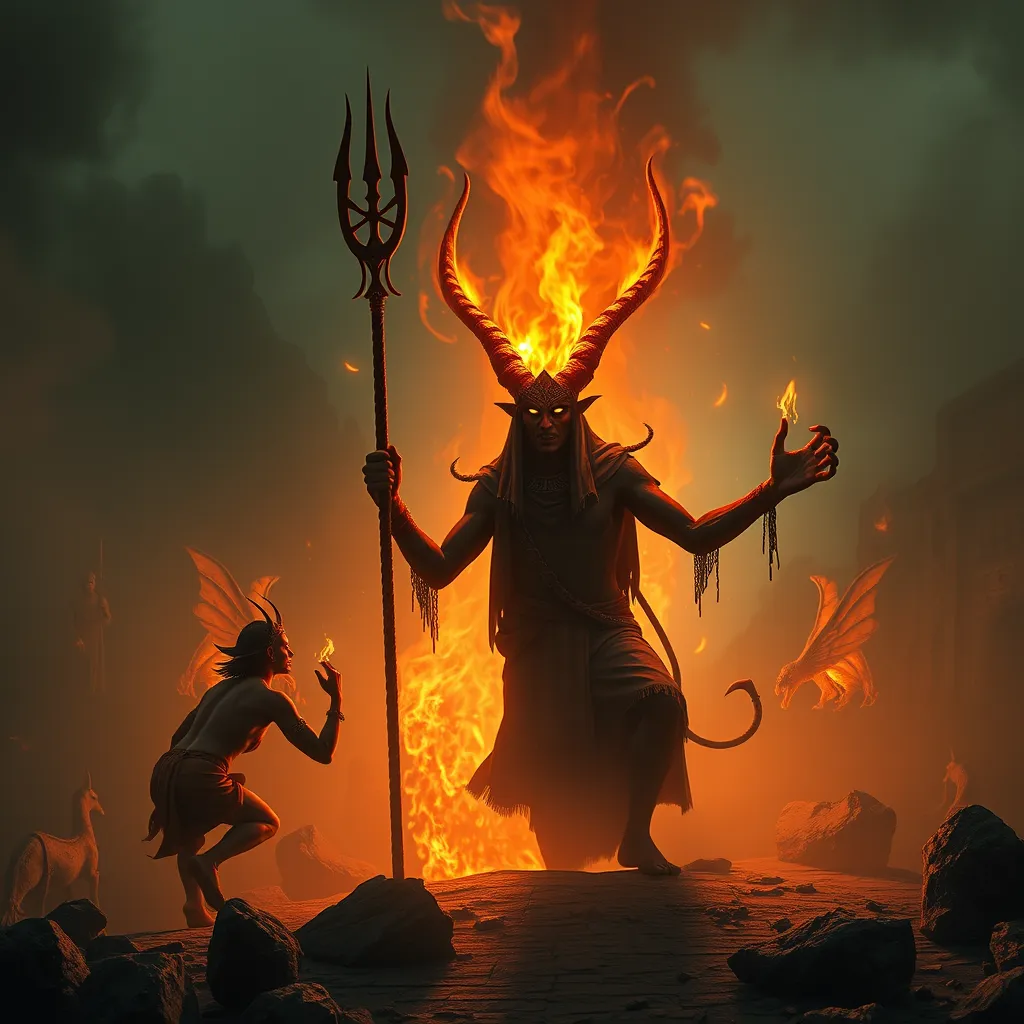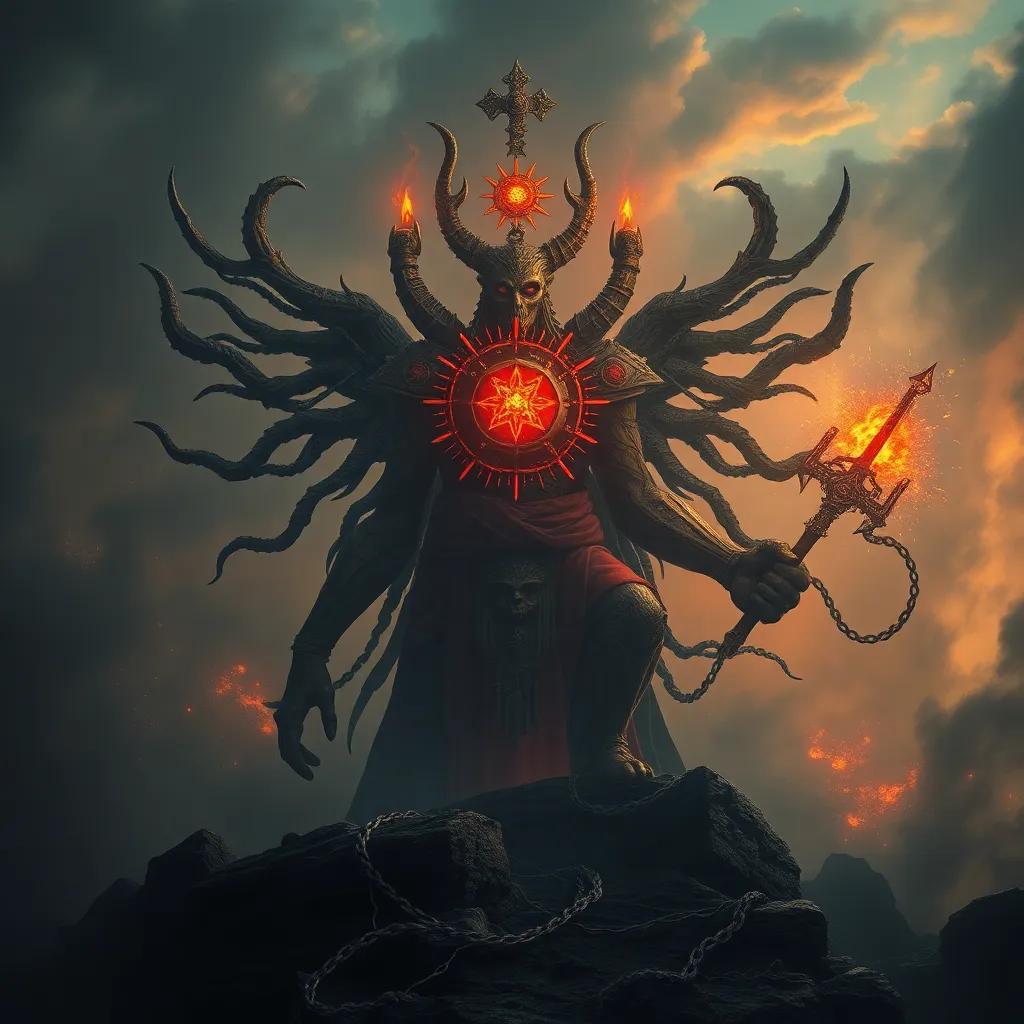The Jinn in Ancient Mesopotamia: Demons, Gods, and the Underworld
I. Introduction
The concept of Jinn, often associated with supernatural beings capable of influencing human affairs, plays a significant role in the cultural and religious tapestry of ancient Mesopotamia. In this context, Jinn can be defined as enigmatic entities that straddle the line between benevolence and malevolence, embodying various aspects of the human experience. They have been represented as both demons and deities, reflecting the complex nature of belief systems in ancient civilizations.
This article aims to explore the multifaceted significance of Jinn in Mesopotamian culture, examining their characteristics as demons, their roles as deities, and their influence on the afterlife. We will also delve into how the concept of Jinn has evolved over time and its lasting impact on later cultures and modern narratives.
II. Historical Background of Mesopotamia
Mesopotamia, often referred to as the “cradle of civilization,” encompasses a region between the Tigris and Euphrates rivers, where some of humanity’s earliest urban societies emerged. This civilization flourished from approximately 3500 BCE to 539 BCE, giving rise to the Sumerians, Akkadians, Babylonians, and Assyrians.
The religious and mythological systems of Mesopotamia were intricate, featuring a pantheon of gods and goddesses, each governing different aspects of life and nature. Among these spiritual entities, the idea of Jinn emerged, representing a unique category of supernatural beings. Early texts from this period, including the Sumerian and Akkadian mythologies, provide evidence of the Jinn’s presence in the cultural imagination of the time.
III. Jinn as Demons: Characteristics and Roles
In ancient Mesopotamian literature, Jinn are often depicted with a range of characteristics that reflect their dual nature. They can be seen as both benevolent protectors and malevolent tricksters. This duality is crucial in understanding the roles Jinn played in folklore and legend.
- Benevolent Jinn: These entities were believed to assist humans, often serving as protectors of families or individuals. They could provide guidance, heal ailments, and offer wisdom.
- Malevolent Jinn: In contrast, malicious Jinn were thought to cause illness, misfortune, and chaos. They could possess individuals or lead them astray, embodying the fears and uncertainties of human existence.
The function of Jinn in Mesopotamian folklore highlights their importance in everyday life, serving as explanations for both good and bad events. Their presence in stories often emphasized moral lessons, reflecting the values and beliefs of the society.
IV. Jinn as Deities: Spiritual Entities and Their Worship
While Jinn are often classified as demons, some were revered as deities within the Mesopotamian pantheon. This distinction raises interesting questions about the nature of divinity in ancient beliefs.
Several Jinn were identified as gods or god-like beings in ancient texts, demonstrating their significance within the spiritual hierarchy. For example, the Jinn associated with natural phenomena, such as winds or fertility, were worshipped and given offerings.
Rituals and offerings dedicated to Jinn differed from those reserved for major gods. These practices included:
- Small altars and shrines
- Food offerings, such as bread and fruits
- Incantations and prayers for protection or favor
These rituals reflect a nuanced understanding of Jinn, acknowledging their power and influence over daily life and spiritual well-being.
V. The Underworld: Jinn as Guardians and Guides
Mesopotamian beliefs about the afterlife were complex, featuring a view of the underworld as a shadowy realm where souls would journey after death. Jinn played a critical role in this journey, often acting as guardians or guides for the deceased.
The role of Jinn in the afterlife can be summarized as follows:
- Guardians of the Underworld: Some Jinn were believed to protect the gates of the underworld, ensuring that only the deceased could pass through.
- Guides for Souls: Other Jinn acted as guides, helping souls navigate the treacherous landscape of the afterlife.
Underworld myths involving Jinn often depicted the challenges faced by the soul and the assistance provided by these entities, illustrating the intricate relationship between life, death, and the supernatural.
VI. The Influence of Jinn on Later Cultures and Religions
The concept of Jinn underwent significant transformation with the advent of Islamic theology, where they were incorporated into the broader understanding of supernatural beings. In Islamic tradition, Jinn are considered sentient beings created from smokeless fire, possessing free will and capable of good or evil.
Comparative studies reveal intriguing parallels between Jinn and other cultural interpretations of supernatural beings, such as:
- The djinn in Arabic folklore
- Demons in Judeo-Christian traditions
- Spirits in various indigenous cultures
The legacy of Mesopotamian Jinn continues to resonate in modern literature and media, often portrayed in stories, films, and art, reflecting the enduring fascination with these mystical entities.
VII. Archaeological Evidence and Textual References
Archaeological findings have provided valuable insights into the role of Jinn in ancient Mesopotamian society. Key discoveries include:
- Clay tablets with mythological stories featuring Jinn
- Artifacts from temples and shrines dedicated to Jinn worship
- Inscriptions detailing rituals and beliefs surrounding Jinn
Scholars and archaeologists have analyzed these findings to uncover the significance of Jinn in the social and religious contexts of Mesopotamia, revealing a rich tapestry of beliefs that shaped the civilization.
VIII. Conclusion
In summary, the Jinn of ancient Mesopotamia represent a complex interplay of cultural, religious, and mythological narratives. Their dual nature as both demons and deities illustrates the multifaceted beliefs of the time, while their roles in the underworld reveal the importance of these entities in the journey of the soul.
The lasting impact of Jinn in cultural narratives is evident in their transition into later religions and their representation in modern media. As we continue to explore the rich history of Mesopotamian beliefs, further research into the Jinn can provide deeper insights into human understanding of the supernatural and the mysteries of existence.



